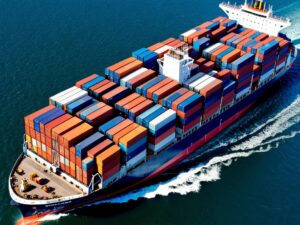"How Tariff Hikes Drive Up Shipping Costs"
Why Shipping Rates Increase When Tariffs Rise: Historical Insights and In-Depth Analysis
Tariff hikes have historically led to rising shipping rates due to several interrelated factors. Understanding these dynamics, along with key historical examples, can help businesses strategically prepare for and manage the impact of higher tariffs on shipping costs.
1. Increased Demand for Shipping Routes
When tariffs are announced, companies often accelerate imports to avoid higher costs, driving up demand for shipping services. For instance, during the U.S.-China trade war in 2018, U.S. companies rushed to import Chinese goods before the tariffs were imposed, causing congestion at major ports. Shipping companies raised rates in response to the increased demand for transportation.
2. Supply Chain Shifts and Route Adjustments
Tariffs can lead businesses to adjust their supply chains, often sourcing from alternative countries to bypass higher tariffs. During the U.S.-China trade tensions, many companies shifted sourcing to countries like Vietnam and India, increasing demand for routes that were less developed than established ones between the U.S. and China. This competition for shipping capacity drove up costs on these new routes, illustrating how supply chain shifts can quickly impact shipping rates.
3. Higher Operational Costs for Shipping Companies
Tariffs can raise operating costs in the shipping industry. For example, tariffs on materials like fuel or essential equipment increase expenses, which are then passed on to customers. Additionally, the need to comply with new tariff regulations adds administrative costs. Historical examples like the 1930 Smoot-Hawley Tariff Act demonstrate how tariff policies can drive up shipping rates due to increased operational expenses.
4. Port Congestion and Delays
Tariffs often lead to port congestion as companies import large volumes to beat tariff deadlines. During the 2018 U.S.-China trade war, U.S. ports faced significant backlogs, causing delays and disrupting shipping schedules. Shipping companies had to deploy extra resources to manage the congestion, increasing shipping costs to balance the added time and resource investments.
5. Supply Chain Inefficiencies and Complexity
When companies reconfigure supply chains to reduce tariff exposure, inefficiencies frequently emerge. For instance, during the U.S.-China trade dispute, many businesses diversified suppliers across multiple countries, leading to increased logistical complexity. These inefficiencies resulted in higher shipping costs, as resources had to be allocated to new, often less streamlined, routes.
6. Reduced Shipping Capacity
Tariff-induced economic uncertainty sometimes forces shipping companies to cut fleet size or reduce route frequency, leading to lower shipping capacity. For example, during the U.S.-China trade war, some carriers reduced services to offset economic risks. Historical precedents like World War I, where tariffs and blockades reduced shipping availability, show how decreased capacity due to tariffs can result in elevated shipping costs due to the limited space and higher demand.
7. Risk Premiums and Increased Uncertainty
Tariffs and the geopolitical uncertainties that accompany them raise risks for shipping companies. During tariff disputes, carriers may impose risk premiums to cover potential losses or disruptions. The U.S.-China trade war saw increased shipping rates, with companies accounting for the risks associated with rapid policy shifts and potential trade retaliation.
Historical Context and Examples
Smoot-Hawley Tariff Act (1930): Aimed at protecting U.S. industries, this act raised tariffs on thousands of imported goods. Retaliation from other countries and a steep drop in global trade drove up shipping costs as companies struggled with new economic realities.
U.S.-China Trade War (2018-2020): The imposition of tariffs by the U.S. on Chinese goods and China’s retaliatory tariffs caused port congestion and increased demand for shipping from alternative sourcing countries. This led to higher shipping rates as supply chains adapted.
World War I Blockades: Blockades and tariffs drastically reduced shipping capacity, leading to soaring shipping rates due to limited availability and heightened risk.
By examining these historical contexts, businesses can gain insights into why tariffs affect shipping rates and develop strategies to navigate these challenges. Strategic planning, supply chain diversification, and monitoring geopolitical developments are key to managing the complexities that arise when tariffs drive up shipping costs.

